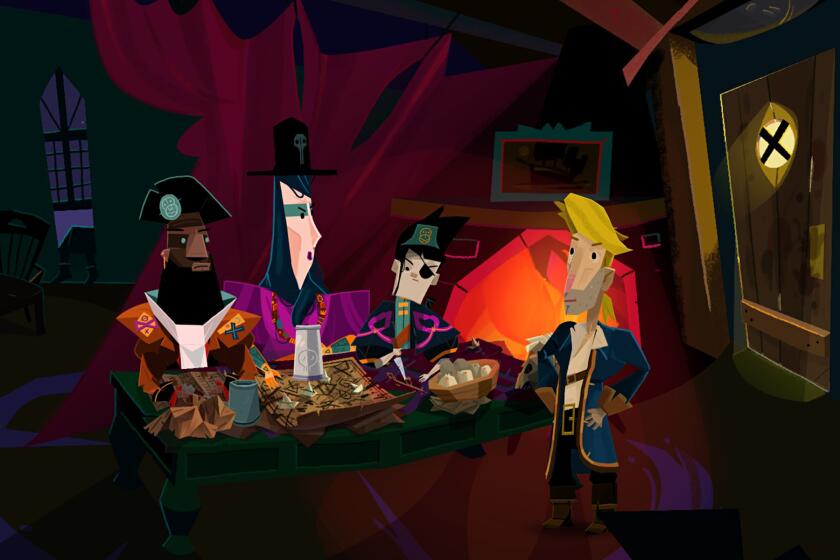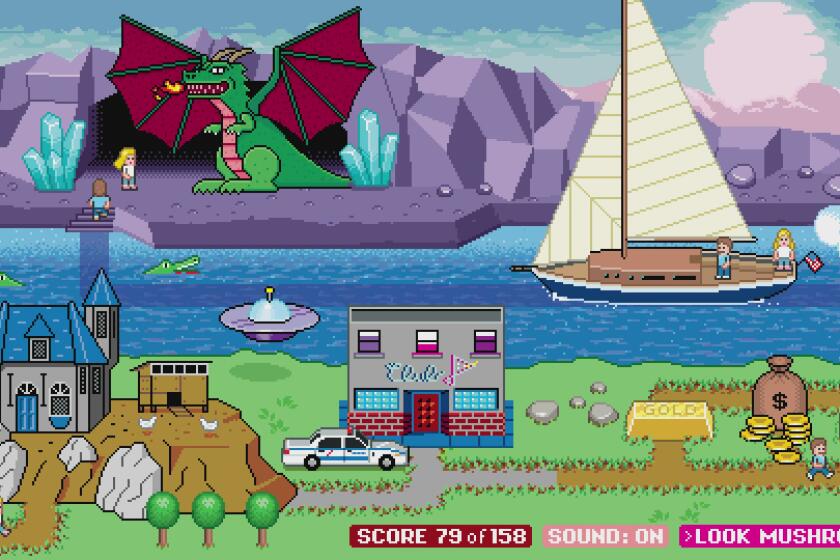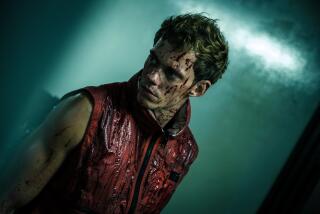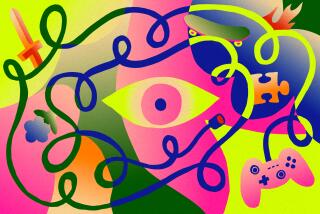Sony’s Santa Monica Studio continues to lead with ‘God of War Ragnarök’
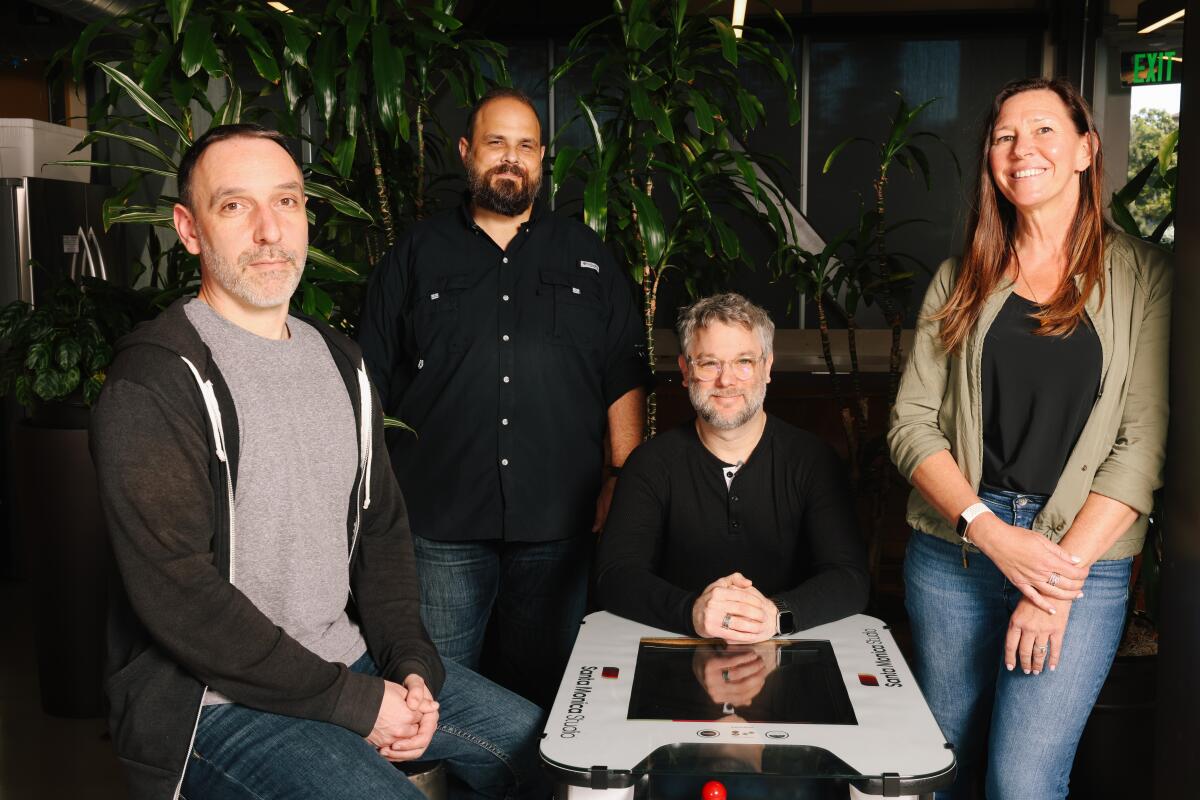
- Share via
With 2018’s “God of War,” a reinvention of the long-running mythical action series for Sony’s PlayStation consoles, the hero, Kratos, was transformed. While Kratos was once a man of more fury than words, Sony’s Santa Monica Studio’s’ “God of War” turned him into one of the video game medium’s most famous dads. In a game of fabled, larger-than-life beings, it was inner conflict that ruled, specifically Kratos’ impossible struggle to shield his son Atreus from the physical and emotional dangers of a confused world.
“God of War” became a hit, winning top honors at the yearly Game Awards and selling 23 million copies worldwide. Its parenting themes were celebrated, held up as a further example of mainstream gaming’s continued maturation and ability to handle complex themes.
Now, Kratos and Atreus have returned this month in “God of War Ragnarök,” a massive adventure in which the younger deity tries to come to terms with his fate and Kratos struggles with Norse legends that constantly aim to needle him into fits of rage, all while coming to grips with his own foreshadowed death.
“God of War Ragnarök” is shaping up to be the biggest video game release of the holiday season. Just days after its release, “God of War Ragnarök” led the 2022 Game Awards nominations with 10.
Kratos, prior to the release of the 2018 title, was described in a documentary by “God of War” director Cory Barlog as being a character who is all-argh, all the time, a masculine protagonist who could expertly rip your head off but do little else.
Yet “God of War Ragnarök” director Eric Williams has been subtly trying to flesh out Kratos beyond those toxic-masculinity impulses since the first game in the series, 2005’s “God of War.” Williams was adamant, for instance, that a hugging mechanic be placed amid a climactic battle of the 2005 title, where Kratos would have to lend his wife and child health to keep them protected during the fight. It was meant to play out as a manifestation of Kratos’ dreams and nightmares, as players already knew the ultimate tragic fate of his family.
It also planted a seed that Kratos could eventually evolve, though that would be more than a decade in the making.
“It was so metaphorical,” Williams said recently in the offices of Santa Monica Studio. “He was fighting the demons within himself, but he was giving his life to his family. That always stuck with me. That could be a thesis for a change in the character, which we took and ran with.”
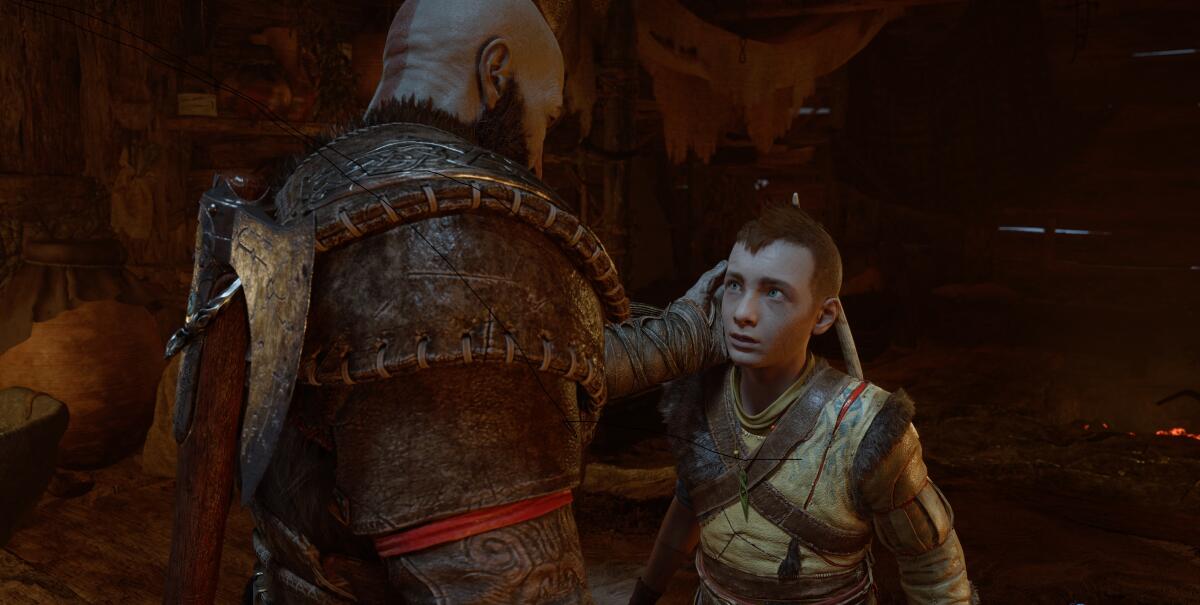
While life-giving hugs amid a frantic battle may be a long way removed from walk-and-talk scenes in “Ragnarök” or extended fights as breathless in their action as in their dialogue, it was a scene, says Barlog, that began to shift the thinking at Santa Monica Studio.
“God of War” (2018) and, even more so, “Ragnarök” are examples of games that challenge the player to never set down the controller. Even plot expository moments that explain, for example, Kratos’ fraught relationship with the goddess Freya are delivered with forward momentum.
Barlog says that was the argument he used to persuade David Jaffe, director of the first “God of War,” not to cut the midbattle hugs.
“We were really excited about what we could do in the game,” Barlog says. “We make games. And it’s really neat and fun to do cinematic things, but how can you actually feel like the player has agency?”
Tender moments typically occur in narrative, nonplayable scenes, but games over the last decade and a half have been experimenting with how to better meld the two.
“We’ve grown slowly, over a decade or two, to that point,” Barlog says, citing Naughty Dog’s “The Last of Us” (2013) as proof that big budget video games can equally balance violence and emotion. “But I think 2018 was possible to me because of so many other games.
“‘The Last of Us’ is defining. You can challenge people on more than killing things, and they’ll want it. It proved to the executives that this is viable. Prior, it was maybe too niche. For the longest time, it was always about the back of the box. You had to have a gimmicky thing to sell it, as opposed to saying that doing something good and engaging people on all emotional levels — not just anger, frustration and fear — is viable.”
But that scene was also emblematic of what has become another staple of “God of War” and now “Ragnarök”: finding small, personal moments in a game with gods, goddesses, beasts and dragons.
“So much of Norse mythology is built around the prophecy of Ragnarök. It’s the only mythology where the gods not only know when they’re going to die, they know who is going to kill them,” says narrative director Matt Sophos. “But the more we started to focus on that, the more we kept going, ‘We’re off the path.’ ... As you’re developing a story, especially one as big as this one, and you know you’re going to have deal with Ragnarök, we could see every time that we were starting to veer off into too much of the prophecy and mythology lane and needed to bring it back to the personal.”
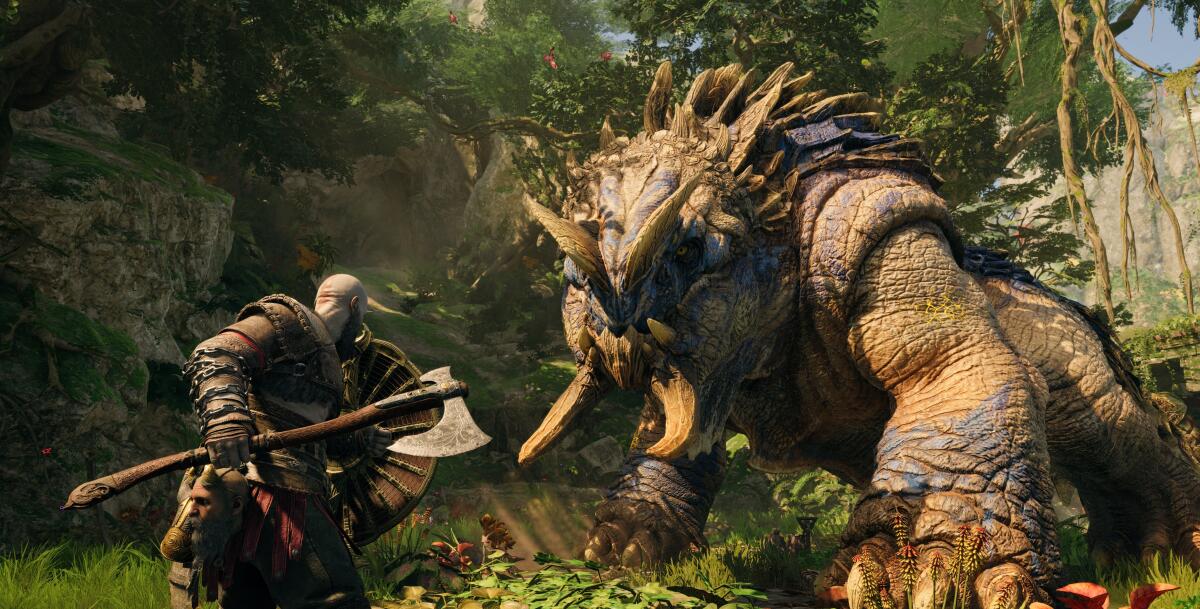
)
That tension is present at the start of the game, with Kratos and Atreus returning home to their relatively humble cottage for a moment of introspective disagreement. Seconds later, however, they’re disrupted by a visit from Thor and Odin. A large-scale battle ensues between Kratos and Thor, with Thor leading Kratos to a far-away battle arena. As the fight drags on, Kratos becomes increasingly concerned over Atreus’ whereabouts and what Odin may be up to with his son.
“We take liberties with Norse mythology,” says Meghan Morgan Juinio, the studio’s director of product development. “We are not a reality-based game, but our settings are based on things that happen to real people. I think that’s where the emotional connection with our fans comes from. Sure, there’s fantasy elements and enemies you wouldn’t see in the real world, but the experiences and the relationships between the characters are very much like things you would see in real life.”
First-time game director Williams says he wanted “Ragnarök” to pick up where “God of War” left off. His goal wasn’t to reinvent the franchise but to have it feel as if it were a new chapter in a continuing saga.
“The best compliment I can possibly get, in my opinion, would be that I feel invisible as a director and [that] it feels like a true continuation,” says Williams. “To me, they’re siblings, and they need to co-exist. I don’t want it to be [Barlog’s] game and my game. To me, that would be sad. I want you to jump in and say, ‘This feels like we just dropped off.’ There are differences, but I don’t think they’re so drastic that it would feel strange or awkward now.”
Barlog says he can play “Ragnarök” and notice where Williams deviated from his own choices. Nothing large-scale, however. Just little details here and there. Williams maps out each scene with Excel spreadsheets, for instance, a step Barlog skips.
“Eric’s like the Wes Anderson of game directors,” Barlog says. “Wes will establish exactly what’s on the set. All the set dressing. A certain figurine that’s on the shelf for one of the characters is fundamentally just as important as the hero prop that exists in the foreground. Its placement means something, not only to Wes but to the characters. He’s fastidious in his planning.”
Out of necessity.
Williams says he learned early in the directorial process that he lives with aphantasia, an inability to visualize mental images in one’s mind. To conquer it, Williams said he would overcompensate, sometimes giving artists dozens of visual references or heavily detailed documentation.
“I am very rigid,” he says. “I like planning a lot of stuff out. I’ll write everything out in detail. A lot of people find that restrictive. ‘What am I supposed to do?’ You’re supposed to make it. But I wouldn’t take that well, either. I had to leave a little bit of wiggle room. It was a learning process.”
Barlog says Santa Monica Studio is currently “spread out on a lot of different things,” although he declined to offer specifics. The studio has in the past published a diverse slate of independent games, including Thatgamecompany’s thoughtful collaborative work “Journey,” and has occasionally spoken of a canceled project that was believed to have had a sci-fi focus.
But Williams is quick to add that if the company dedicates itself full-time to the “God of War” franchise, there’s no shame in that.
“I remember talking to someone from another game company, where they were trying to get me to leave. The said, ‘Do you just want to be known as the “God of War” guy for the rest of your life?’ That was your big pitch to dissuade me? Because yes, I kind of do.”
Ron Gilbert once said he would never return to the ‘Monkey Island’ franchise unless he owned the brand. Things changed.
After a 20-plus-year absence, Roberta and Ken Williams, the wife and husband behind the breakthrough video game ‘King’s Quest,’ make an unlikely comeback.
More to Read
The biggest entertainment stories
Get our big stories about Hollywood, film, television, music, arts, culture and more right in your inbox as soon as they publish.
You may occasionally receive promotional content from the Los Angeles Times.
